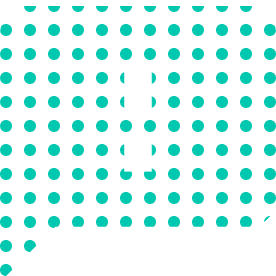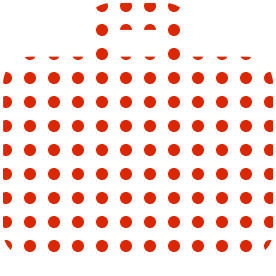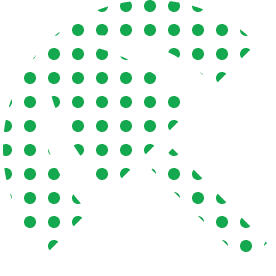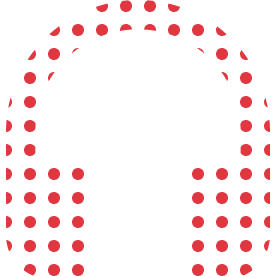Hello! I'm Anirudh.
I design digital products
in Bangalore, India

CASE STUDY
Empowering citizen journalism
by easing issue reporting
and resolution tracking.


CASE STUDY
Making independent travel
planning and collaboration
easier to manage.

UNDER NON-DISCLOSURE
Reimagining audio with
interactive elements and
augmented experiences.

MY JOURNEY SO FAR
Product design at scale at PhonePe — Early startup design at Adori Labs — UX and management at InteractionOne — UX at nearbuy — UX consulting for startups

WRITINGS
Revisiting the normal in a post pandemic world 🔗
Delight and function — a designer’s inner thoughts 🔗
Things I learned as a designer at an early stage startup 🔗
Maiam Whistle App
Designed a platform dedicated to easy reporting, setting escalation matrix and resolution of issues - for the cognizant citizen.
Project setup
At InteractionOne, I worked on a socially relevant platform Maiam Whistle. It was a digital platform to drive social awareness and civic responsibility among the masses.
My role
I led the UX work for the project, collaborating with IO’s lead UI designer and tech teams. My responsibilities included:- Documenting consumer facing app flows 📑
- Defining persona archetypes and their usage of the platform 👤
- Creating a shared understanding among the development, stakeholder and design teams. ℹ️
Context
Corruption in India takes many forms, and its results can sometimes be seen in the lack of civic amenities or the maintenance of such amenities. These things are seen as a battered road after light monsoon rains, open sewers or drifting electrical wires.
Audience & user behaviour
A product such as this, will affect people of all ages and backgrounds. The current reporting system involves concerned citizens taking any of these steps:- Upload images within relevant WhatsApp / chat / social media groups, complain about them for a couple of days, and move forward.
- Writing the issues in the column of the newspaper or leaving complaints on the grievance helplines.
- Raise their voice about the issue on new channels or radio stations, with the hope of somebody acknowledging their alerts.
Trust, but verify
On the other hand, there is a potential chance for miscreants to use a reporting platform to target any particular municipal corporators. To prevent this from happening, a verification mechanism would be set in place. Any reported issue will have at least 3 volunteers who would verify and authenticate it.There is always a chance of someone uploading inaccurate images from the web or images from other locations. In the first version, the platform allowed users to only upload the images and videos clicked at the venue at the time of reporting.
Users & archetypes
An initial discussion of the idea garnered interest from 3 groups of people:- An older generation of citizens who have retired recently and want to contribute their time to relevant causes.
- Young adults who would travel around cities frequently. They were happy to take small detours to contribute to a better society.
- Pick any person of any age, gender or economic background out from a crowd. As long as they carry a smartphone & have data access, they can contribute to the platform.



Reception & impact
The application was well received, peaking at #2 on the Play Store. As of Nov 2019, it had a combined 50,000+ downloads on both Android and iOS. Most feedback received was regarding the handling of problems and the "social good" aspect.
Check out the product here: Android application, iOS application.

Microland One
Redesigning the intranet application for a large IT company to fit the modern employee's mobile workflows. 📲
Project setup
Microland Limited is one of the oldest IT players in the Indian software ecosystem. It employs over 4000 employees, and serve customers across software verticals like cloud computing, industrial internet of things, digital workspace management, applications and more.Every company relies on a common intranet structure to share information. Before modern team messaging systems became popular, intranet structures would take the form of IRC-based chat rooms or Wiki-style editable pages or shared internet comment threads.Microland chose to rethink the way internal communication worked. They looked to re-define their intranet, to simplify the employee’s workflows.
Context
To understand their digital habits about their professional work, a survey of about 100 employees (both structured as well as contextual inquiry) revealed that:- 📱 The Android to iOS usage split was 90% to 9% with a small percentage of people using BlackBerry and Windows mobile systems, among India employees.
- 🌎 About 70% of the employees worked out of India, 15% from the USA, 5% from UK and the rest work from remote and other locations.
- 🔼 Employees outside India were more likely to use iPhone, with the Android to iOS split being 70% to 30%.
- 🖋 The leaders, senior executives and C-suite of company were predominantly iOS devices.
- 🔒 There was heavy emphasis on secure communication and confidentiality processes. Private messaging wasn’t a part of the enterprise grade app due to privacy concerns; and this was proving to be a bottleneck for many employees.
- ✈️ Travel itineraries and planning, pay and reimbursements, attendance and leave policy were handled separately in separate standalone phone apps (and web apps with individual logins).
- 📩 100% of the employees used an enterprise grade email client on their phones. They were required to change the password to these accounts every 90 days for security reasons.
Existing system
The information shared on the intranet included a combination of news feeds, messaging and celebrations, all at one place.- 🎊 Company-wide event details, CSR initiatives and holiday schedules.
- 📢 Announcements: emergencies, regional expansion news, profit reports and so on.
- ✅ Promotion lists, employee milestone celebrations, new employee on-boarding processes.
- ℹ️ Common information boards, department-level communications, gratitude boards.
Prioritizing problems
With over 16 departments spread across 7 countries in 5 regions, every vertical brought along a different perspective to the possible digital solutions we were working on. Since the HR team were aware of the joining modalities, department-wise team compositions, we decided to work with them and take inputs from other departments wherever necessary.
While it was obvious that we needed a mobile-first approach, the call to build a native app for the dominant mobile users was made once the preliminary survey concluded.A web-based light version of the app would be built at the end of the project life cycle, to cater to the needs of employees who can't access information through the phone applications.
Audience and
user archetypes
With the understanding gained from the survey and detailed conversations with the stakeholders, a closer look at the requirements revealed some specific questions that needed to be answered:
What problems do we attack first?
- 📲 How do we ensure the tasks do the users complete on the intranet, be done on the app?
- 🖥 What could we do to move a static Intranet website into “the modern era”?
- ✨ Can we create an added value to the app experience?
- 📝 What are some of the workflows that could help the employees connect better as a community and as colleagues?
There’s already an (old) app for that!
If we were to ask the employees what they wanted, we would have to build an ecosystem with unfeasible features, mailbox, newsfeeds and reminders within the app. Instead we prioritised easing user behaviour by folding many app dependencies inside MicrolandOne app. The use cases included dependencies on several third party organisations who served the Microland employees for services like:
- HR, leave policy and management
- Awards and recognition
- Expense management and travel reimbursements
- Cab hailing, transport workflows
- Medical insurance details
- Salary slips, tax and payroll details
Each of these vendors would need separate logins. Furthermore, vendor terms and agreements would be contract and region specific; thus needing the employees to keep track of, and download many apps.
Don't forget to sprinkle some (functional) delight
Some of the more requested features in the new solution came from a mix of departmental, personal and professional needs:
- 🔍 Internal company-wide employee search
- 🗣 An easier way to communicate with one another
- 🎖 Personalised message delivery system from the CEO to the employee
- 🤝 100% paperless on-boarding process for the new joinees
- 💻 Easier access to internal job postings
- 📊 Ability to run company-wide polls and surveys
Our guiding principles
- Utility - Employees of ages 18-60, irrespective of their gender or nationality would use the application. Usability criteria: neutral color usage, legible typeface and size, sharp contrast - that could work across all ranges of devices; worth INR 4000 and upwards. Building for smartwatches weren’t prioritized since only a negligible number of employees (at the time) wore one.
- Navigability - Users should easily navigate from one part of the app to another. This decision drove us to find better ways of highlighting different sections of the app.
- Familiarity - It wasn’t enough to provide the users with something new and novel. It was important that they find their way without having to refer to any manual. Traditional interaction models were touched upon, without being meddled with.
- Task-focus - Since there’s only so much time a user can spend on this app, we focused on helping them finish the tasks as efficiently as possible. Some sections of the app like the Gallery or Events were designed for free exploration, but other flows were more utility based.
Planning feature migrations from web to app
Email and Whatsapp groups notwithstanding, shared spreadsheets to discuss feature-wise transitions and app delivery schedules. As the design lead for the project, I was involved in decision making,co-ordination of tasks.

Since well over a fifth of Microlanders work overseas, it was important to deliver the right region specific experience and news bits to them. The content would form a scrollable home “feed” with related organisation-wide bits, along with region-specific delivery of information.


Reception and feedback
The application would be delivered in a multi-phase manner, with a set of features developed, tested and fully content enabled.At the end of the project lifecycle, 24 features were housed within the Microland mega application.An initial release was made on 30 August 2017, on both iOS and Android platforms. Exactly 2 years after the release of the app, with several feature removals and additions, conversations and brainstorming; the app has reached a guesstimated 87-90% of the workforce.
Check out the Android application here
Making independent traveling easier to manage. (WIP)

Context
Corruption in India takes many forms, and its results can sometimes be seen in the lack of civic amenities or the maintenance of such amenities. These things are seen as a battered road after light monsoon rains, open sewers or drifting electrical wires.
Our collective lack of action provides an effective and opaque curtain for the authorities to hide their failures. Maiam Whistle intended to solve this double edged problem in a manner that seemed to tell the authorities, “hey, we are watching you” and the people, “if you find a civic issue, report it”. The product’s very name comes from “blowing the whistle” - to alert, to direct attention, to pique interest
Audience & user behaviour
A product such as this, will affect people of all ages and backgrounds. The current reporting system involves concerned citizens taking any of these steps:
- Upload images within relevant WhatsApp / chat / social media groups, complain about them for a couple of days, and move forward.
- Writing the issues in the column of the newspaper or leaving complaints on the grievance helplines.
- Raise their voice about the issue on new channels or radio stations, with the hope of somebody acknowledging their alerts.




